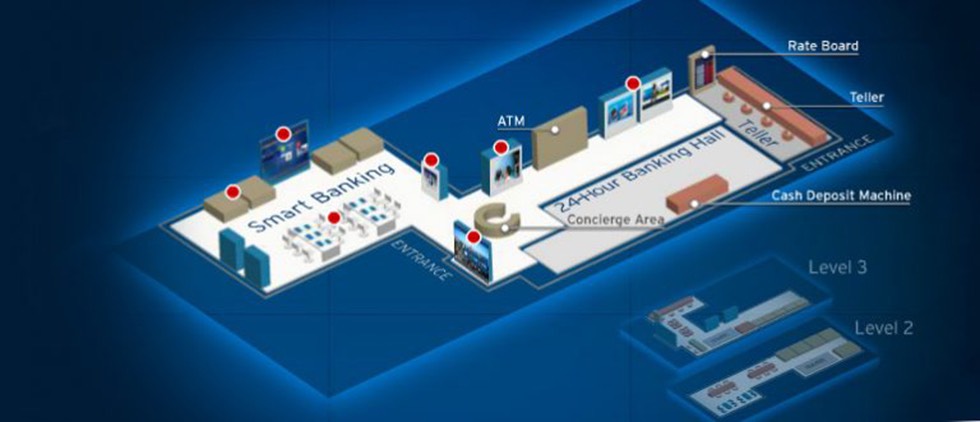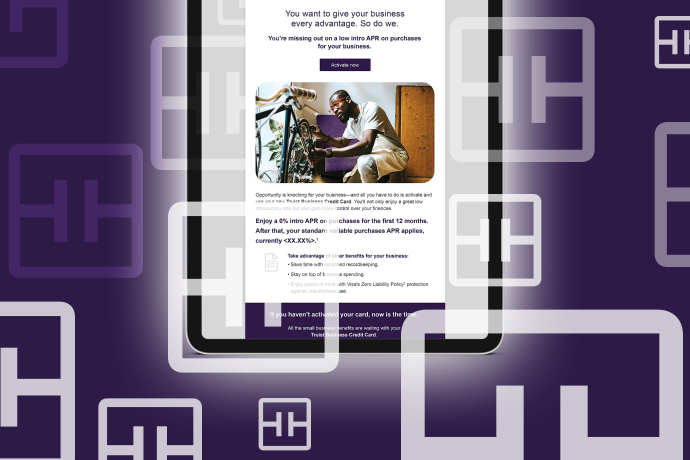6 Factors Changing the Bank Branch Customer Experience

More and more, we see bank branches becoming a mix of environments: high touch for affluent where personal interaction is protected, and low touch – via technology – for mass market consumers. Banks are also reducing expensive real estate and staffing costs as they move from the traditional models (flagship, mass branch, ATM) to models that encompass a strategic mix of venues. Here’s a quick look at why change is happening and how that change is apparent right now.
1. Branch use is down.
The growth of online and mobile banking is impacting the volume of branch visits which is steadily declining for most issuers. For example, PNC reports that 40 percent of customers have not visited a branch in the last three months, and the number of check deposits by mobile devices went from zero to 15,000 per day within 2012. PNC’s 2012 Annual Report attributes digital customer preference as part of the reason “we plan to close more branches in 2013 than we have in our history.”
2. Key markets warrant focus.
Markets with both a concentration of customers and a concentration of wealth are more likely to see branch growth. Citi and its competitive bank set are targeting New York City, San Francisco, Los Angeles, Chicago and Miami as key markets. Throughout 2013, each of these markets will see openings of Citi SmartBanking branches, for example.
3. Bank investments align with revenue.
High value, multi-relationship customers will continue to enjoy branch perks, from privacy and high-touch services to special access outside of the tech-heavy public space designated for the mass customer base.
If SmartBanking prototypes are a clue (Citibank’s much celebrated Union Square branch in NYC was based on the Asian prototype), expect to see the CitiGold customer, for instance, continue to enjoy a personalized branch experience. This could include private access to a CitiGold-only area within the SmartBank, and it would provide the luxury of space, privacy and perks, such as a Kid’s Corner.

4. Banks are reducing people costs.
For the vast majority of customers, video assist is being planned or currently deployed to minimize the need for in-person staff. Throughout 2013, Bank of America is rolling out new ATMs that allow customers to interact with live tellers through video conferencing. These teller-assisted ATMs offer enhanced features like check-cashing for exact amount, cash withdrawals in choice of denomination and extended hours.
Citi started this trend with ATMs in public spaces that allow customers to call up experts 24/7 on the television screen and have conversations about mortgages, retirement savings or account problems.
5. Shrinking the physical branch is now possible.
Technology and other innovations addressing everyday banking needs have enabled banks to provide services within fewer square feet. For example,
- Wells Fargo Bank, with 23 million customers banking online, knows there’s still a need for new customers to meet face to face when opening an account, but they are experimenting with a smaller self-serve model. Keeping with the trend to downsize and down-staff, Wells Fargo is testing “neighborhood stores,” which include greatly reduced retail footprints, tablet-equipped roving reps instead of tellers and ATMs with expanded self-service capabilities.
- Recently, Chase introduced an open plan branch to Union Square, San Francisco, with glass walls that open to the street, an emphasis on ATM/self-service and content delivery via an 18-screen video wall. And Chase’s newly enhanced ATMs, we have noted, have been well received by customers as evidenced by positive Yelp reviews for San Francisco branches that feature them.
6. Offloading branch services is a win-win.
Offloading branch-related services that don’t need human interaction not only improves efficiency for the bank but also plays to customer preferences for accomplishing certain tasks – a win-win. Here are three examples:
- Bank of America allows customers to schedule in-branch meetings through Facebook or the bank’s website. Soon, its mobile app will also allow this feature.
- Wells Fargo Bank already has launched a similar service, as we previously reported.
- Bank of America is currently working on allowing debit card replacement to happen via mobile app… without the need for the customer to visit a branch or even make a call.
In summary, all customers banking with a major player can expect continuing improvements to digital banking solutions – both the quality of how they bank out of branch and the depth/breadth of services and capabilities. Mass consumers (as opposed to affluent consumers) can also expect continued demise of the traditional branch services they may like: face-to-face service and expertise, banking as a destination not just a transaction, privacy and a level of customization. This strategy is here to stay, as banks continue to prescribe to all customers the most revenue-friendly distribution models in their arsenals.






